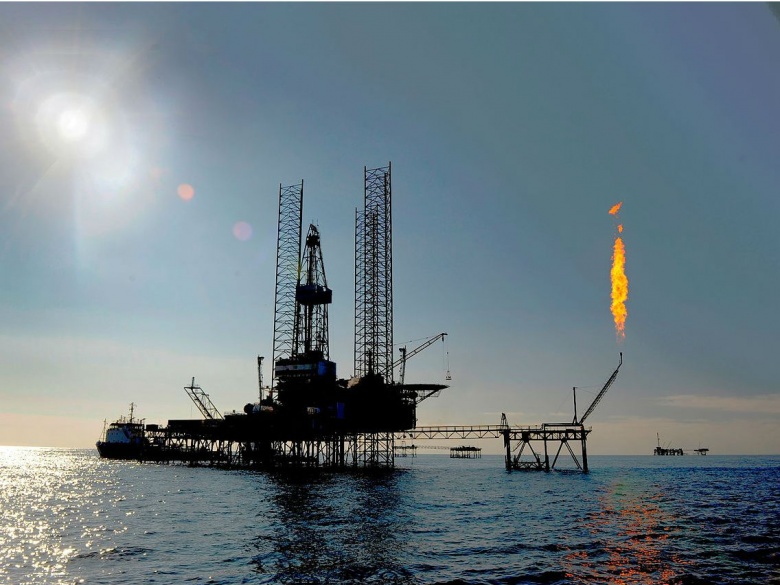
2,300-Ton SP Gas Platform Installed

“As soon as the platform is launched, 14 million cubic meters of natural gas will be extracted per day from the offshore field,” Hassan Bouyeri was quoted as saying by Shana.
Elaborating on technical issues, Bouyeri noted that plans are in place to complete hook-up operations by March 2017 so that phase 17 becomes fully operational.
"South Pars phases are gradually becoming operational," he said, adding that offshore platform 17A whose output also stands at 14 million cubic meters per day has already come on stream.
Underscoring that all stages of designing and building of the platform was undertaken by Iranian engineers from the Iran Shipbuilding and Offshore Industries Complex (ISOICO), he added that Iran Marine Industrial Company (SADRA) has already started pipe laying operations to connect platform 17B to platform 17A with the help of a C-Master crane ship.
The 18B platform’s output currently stands at 14 million cubic meters per day and total output from phases 17 and 18 exceeds 46 mcm/d.
Reportedly, South Pars phases have to date produced12.5 billion cubic meters of natural gas, 500,000 barrels of gas condensates, 260,000 tons of ethane and 300,000 tons of propane.
South Pars is the world’s largest gas field, shared between Iran and Qatar, covering an area of 3,700 square kilometers of Iran’s territorial waters in the Persian Gulf. It adjoins Qatar’s North Field, which measures 6,000 square kilometers.
A second gas processing unit at the refinery of South Pars phases 20 and 21 is now operational, Alireza Ebadi, director of the two phases said.
Ebadi added that output from phases 20 and 21, which amounts to 57 mcm/d, is injected into the national gas grid for domestic consumption.
Pointing to the gradual development of the phases, Ebadi noted that more than 90,000 barrels of gas condensates were processed in phase 20 and 21 over the past week.
The two phases are planned to produce 77,000 barrels of gas condensates per day, 1 million tons of liquefied gas per annum, 400 tons of sulfur annually as well as a million tons of ethane.
------- Fire at Phases 20, 21
Officials reacted to reports on a fire that broke out on Sunday in the recently-launched phases 20 and 21.
Mahdi Yousefi, managing director of Pars Special Economic Energy Zone, said "The fire, caused by leakage of chemical materials, was fully contained."
No one was injured in the incident and the two phases have resumed normal operations.
Iran has close to 34 trillion cubic meters of known natural gas reserves, which is about 18% of the total global natural gas reserves. The country has the potential to become a major player in the international gas market when all sanctions are lifted.
Iran's strategic location can help meet the growing natural gas demand of Asian countries like India, China and Pakistan. Tehran is planning to build several gas pipelines to boost exports. Plans envisage boost in gas production capacity from around 430 million cubic meters per day at present to 1 billion cubic meters a day in 2017 and 1.2 bcm/d by 2020.



Trump weighs using $2 billion in CHIPS Act funding for critical minerals

Codelco cuts 2025 copper forecast after El Teniente mine collapse

Electra converts debt, launches $30M raise to jumpstart stalled cobalt refinery

Barrick’s Reko Diq in line for $410M ADB backing

Abcourt readies Sleeping Giant mill to pour first gold since 2014

Nevada army depot to serve as base for first US strategic minerals stockpile

SQM boosts lithium supply plans as prices flick higher

Viridis unveils 200Mt initial reserve for Brazil rare earth project

Tailings could meet much of US critical mineral demand – study

Kyrgyzstan kicks off underground gold mining at Kumtor

Kyrgyzstan kicks off underground gold mining at Kumtor

KoBold Metals granted lithium exploration rights in Congo

Freeport Indonesia to wrap up Gresik plant repairs by early September

Energy Fuels soars on Vulcan Elements partnership

Northern Dynasty sticks to proposal in battle to lift Pebble mine veto

Giustra-backed mining firm teams up with informal miners in Colombia

Critical Metals signs agreement to supply rare earth to US government-funded facility

China extends rare earth controls to imported material

Galan Lithium proceeds with $13M financing for Argentina project

Kyrgyzstan kicks off underground gold mining at Kumtor

Freeport Indonesia to wrap up Gresik plant repairs by early September

Energy Fuels soars on Vulcan Elements partnership

Northern Dynasty sticks to proposal in battle to lift Pebble mine veto

Giustra-backed mining firm teams up with informal miners in Colombia

Critical Metals signs agreement to supply rare earth to US government-funded facility

China extends rare earth controls to imported material

Galan Lithium proceeds with $13M financing for Argentina project

Silver price touches $39 as market weighs rate cut outlook

















